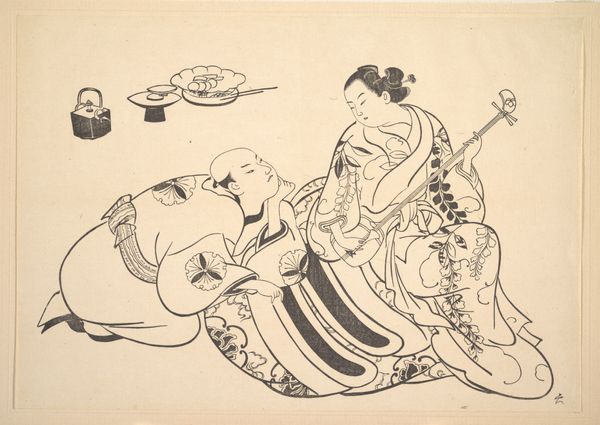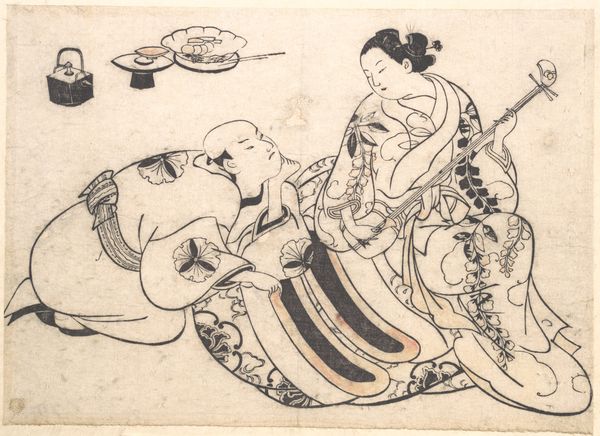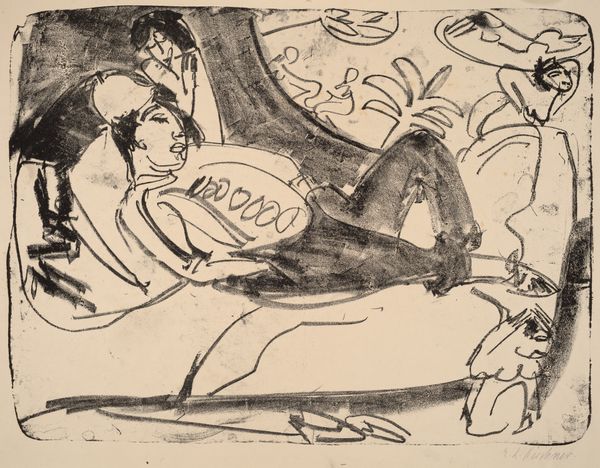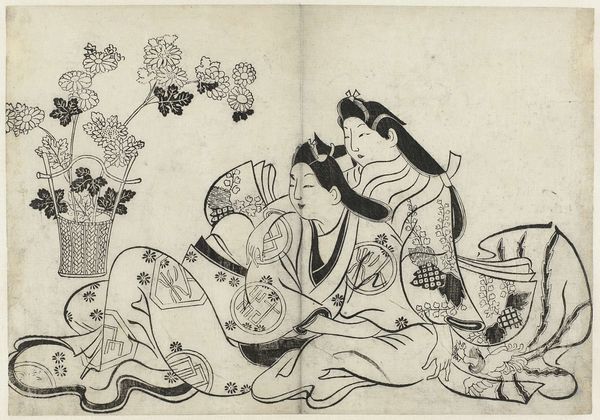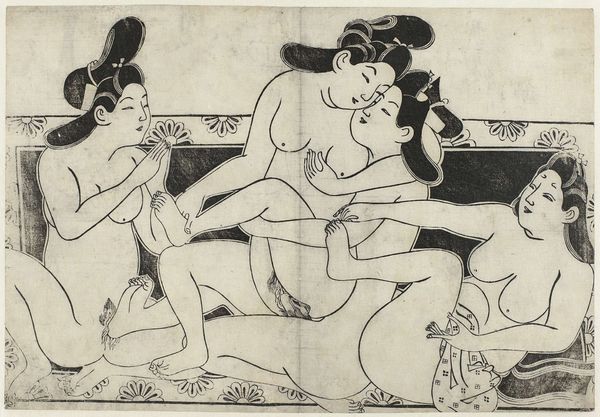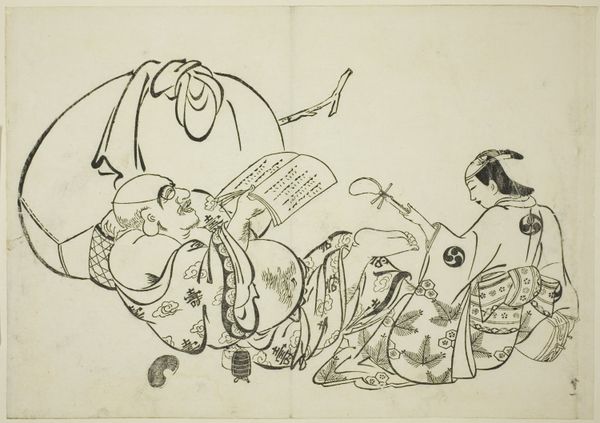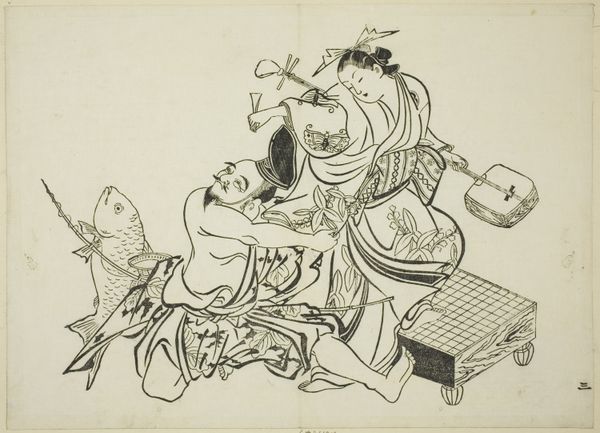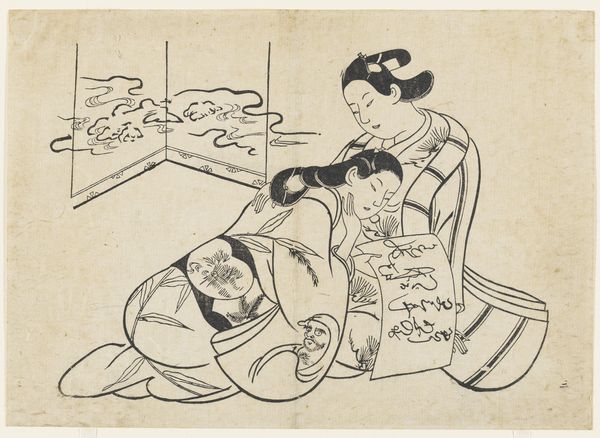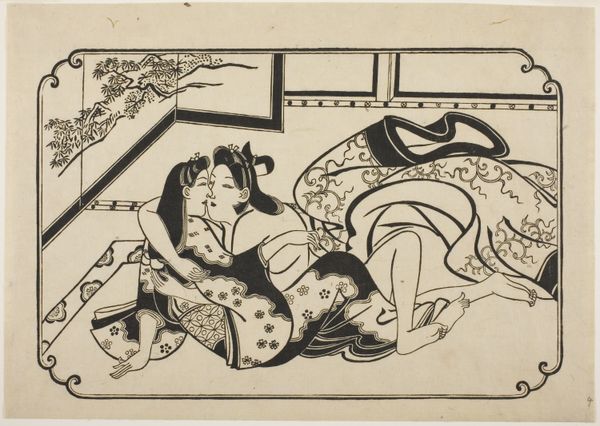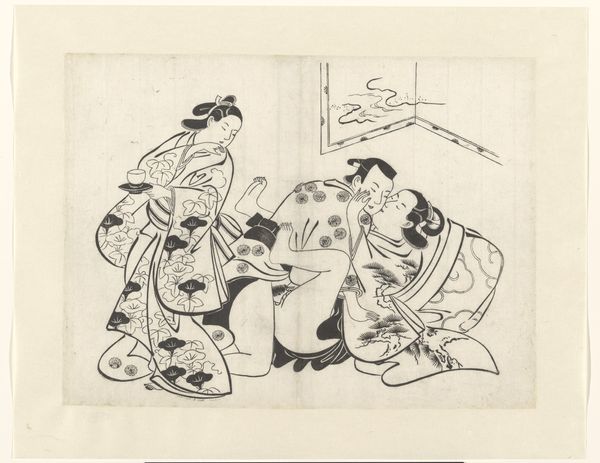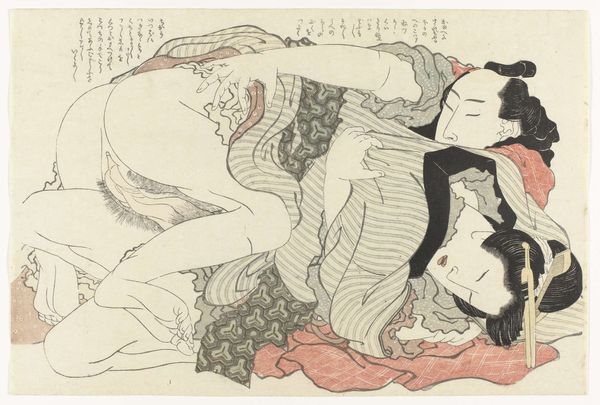
print, woodcut
# print
#
ukiyo-e
#
figuration
#
woodcut
#
orientalism
#
line
#
erotic-art
Dimensions: height 256 mm, width 374 mm
Copyright: Rijks Museum: Open Domain
Curator: Let's talk about this woodcut print, Liefdespaar op kleed, or "Love Couple on a Cloth," made around 1690 by Sugimura Jihei. The print resides here at the Rijksmuseum and strikes me with the skill shown in the linework. What’s your take? Editor: There’s an intimacy in the composition; almost voyeuristic, don't you think? The eroticism feels incredibly charged. Curator: I find myself focusing on the production and its context. These kinds of prints were relatively inexpensive, making art accessible beyond elite circles. How does that democratisation impact how we view the image itself, would you say? Editor: Hugely. The proliferation of such images challenges notions of high versus low art. Considering Edo society's stringent class structures, the commodification and dissemination of erotic imagery speaks volumes. This also normalizes queer eroticisms during a time of gender expectations. Curator: And this was done by means of industrial practices which speak volumes about production lines in art as a whole! The materiality also holds clues about who accessed the artwork. You can tell just by the fading of the image alone of all the times the art must have been passed along from one set of hands to the other! Editor: That is a very interesting point, especially as it pertains to an object representing love, desire and sensuality, especially outside marriage. Think about how a print like this could be interpreted by varied audiences; each viewer interacting in such an immediate, individual way to a mass-produced piece, Curator: What I find particularly intriguing is how the production – the line work, the printing – impacts the art, not just the imagery. Editor: Exactly! It becomes a cultural artifact shaped by historical and material conditions. What seems like a straightforward erotic image blossoms into this multidimensional discourse around agency, labor, identity and visibility. The lines themselves were likely quite political. Curator: A political line it certainly seems. Thank you for elucidating the conversation about this particular artist’s means, processes, and the significance it bears. Editor: Thank you for drawing our attention to the social frameworks that helped inform the artist himself! A perspective well appreciated, indeed!
Comments
No comments
Be the first to comment and join the conversation on the ultimate creative platform.
